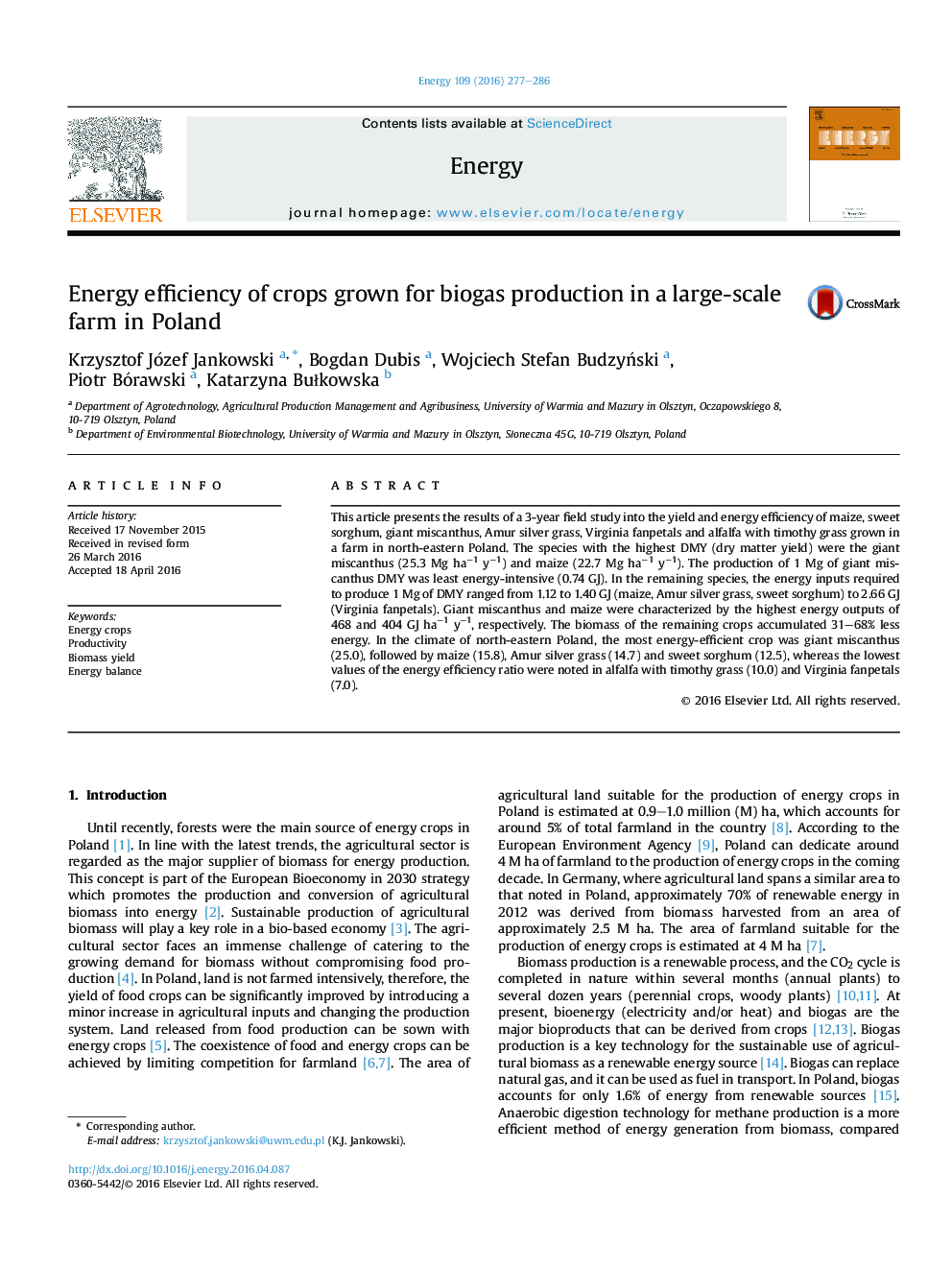| Article ID | Journal | Published Year | Pages | File Type |
|---|---|---|---|---|
| 8073459 | Energy | 2016 | 10 Pages |
Abstract
This article presents the results of a 3-year field study into the yield and energy efficiency of maize, sweet sorghum, giant miscanthus, Amur silver grass, Virginia fanpetals and alfalfa with timothy grass grown in a farm in north-eastern Poland. The species with the highest DMY (dry matter yield) were the giant miscanthus (25.3 Mg haâ1 yâ1) and maize (22.7 Mg haâ1 yâ1). The production of 1 Mg of giant miscanthus DMY was least energy-intensive (0.74 GJ). In the remaining species, the energy inputs required to produce 1 Mg of DMY ranged from 1.12 to 1.40 GJ (maize, Amur silver grass, sweet sorghum) to 2.66 GJ (Virginia fanpetals). Giant miscanthus and maize were characterized by the highest energy outputs of 468 and 404 GJ haâ1 yâ1, respectively. The biomass of the remaining crops accumulated 31-68% less energy. In the climate of north-eastern Poland, the most energy-efficient crop was giant miscanthus (25.0), followed by maize (15.8), Amur silver grass (14.7) and sweet sorghum (12.5), whereas the lowest values of the energy efficiency ratio were noted in alfalfa with timothy grass (10.0) and Virginia fanpetals (7.0).
Related Topics
Physical Sciences and Engineering
Energy
Energy (General)
Authors
Krzysztof Józef Jankowski, Bogdan Dubis, Wojciech Stefan BudzyÅski, Piotr Bórawski, Katarzyna BuÅkowska,
